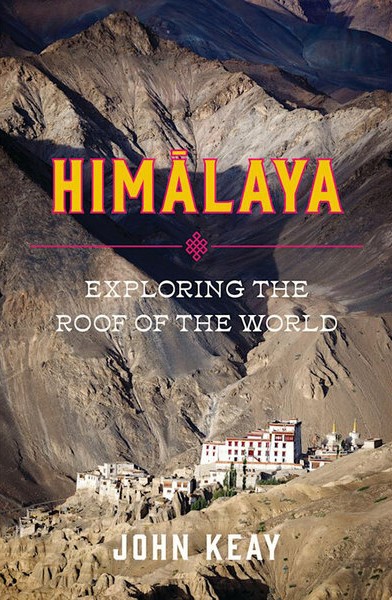Himālaya: Exploring the Roof of the World
- By John Keay
- Bloomsbury Publishing
- 432 pp.
- Reviewed by AA Bastian
- December 22, 2022
An illuminating look at a poorly understood region.

You’ll pronounce Himālaya properly after reading John Keay’s new book. Keay, known for contextualizing broad sweeps of Asian, in particular South Asian, history, tackles the iconic mountain range in Himālaya. His long career writing histories from west to east Asia sets us up comfortably to delve into all the borders of this vast region the size of Europe. This time, he also takes on geology and weather to give us a new angle on climate change.
Himālaya is known as the “roof of the world” or as Asia’s “water tower,” depending on one’s perspective; mountains can be seen either as trophies or as something sacred. Himālaya’s highest peaks still mystify humans, particularly the Asians who live at their base and the Europeans (and a few East Asians) who attempt to climb them.
All this natural beauty, and the tumultuous political history of Himālaya, contrasts with Antarctica, the other region — uninhabited and thus a politically neutral climate preserve — that garners most of our thoughts on terra warming and climate change. Yet Himālaya, Keay argues, deserves more of our attention in the global drive to preserve our planet. What is known about the region challenges some of our beliefs about climate and preservation. What is still unknown leaves us to wonder.
Keay goes out of his way to present the Asian perspective on Himālaya, including the religious beliefs that shape locals’ engagement with the area. He finds meaning in these stories and honors their role in the lives of those who live in the region, while nonetheless separating fact (connected to an observable reality) from fiction (created by perception and belief). This is hard to do, but he has taken care here.
Prepare for exhaustive detail on European climbing expeditions. These journeys marked Europeans’ competition to name and claim the mountains during the 19th century. Many died. Where sources and knowledge are limited, the field notes from these treks help us measure and visualize the region as it was understood — or misunderstood — at the time. I strongly suggest flipping back to the maps in the front of the book as you read. Locational awareness is critical in making sense of this unfamiliar landscape.
Along with illuminating its geography, Himālaya contextualizes the region’s many religious beliefs. Writes Keay:
“The Himalayas of our maps are not, then, the first Himalayas, nor are they the last. They’re the product of a sequence of birth and rebirth — in fact of reincarnation, not unlike the karma-regulated life cycles to which Himālaya’s Buddhist and Hindu inhabitants subscribe…[yet] a mountain was not, and still isn’t, just an ‘abode of deities’ (né-rí); it is itself a super-deity. As such it exercises an awesome agency in keeping with its louring presence, while enjoying a companionable social life with other mountains.”
Keay’s humor helped me push through some of the book’s denser details. For example, there’s this quip about the bestselling author of Seven Years in Tibet, Heinrich Harrer: “It seems to have taken him three years just to inform his family he was there.”
I started this book thinking a better understanding of Himālaya would merely augment my knowledge of the area. But I ended believing I’d stumbled upon a wholly unique, hidden region with a surprisingly central role in our history, especially regarding climate change and the religious impulses that buttress its natives. It’s also a place that could not be subdued by Europeans. It stands apart, mystified and demystified in Keay’s Himālaya, challenging our assumptions about the planet and its peoples.
AA Bastian is agent-represented for her book, Luddington, a rare bottom-up account of colonial Asia. She published on a new source for the Second Anglo-Burmese War in the Journal of Burma Studies, “The Other Bayonet: A New Source to Frame the Second Anglo-Burmese War.” Find her on Twitter at @AABastianWrites.

